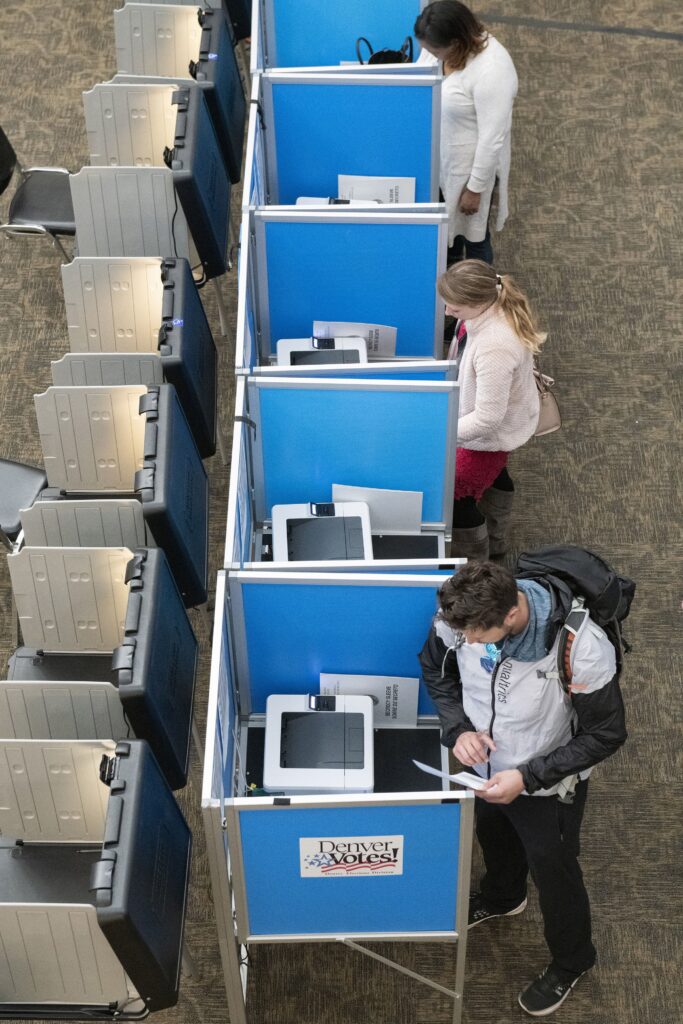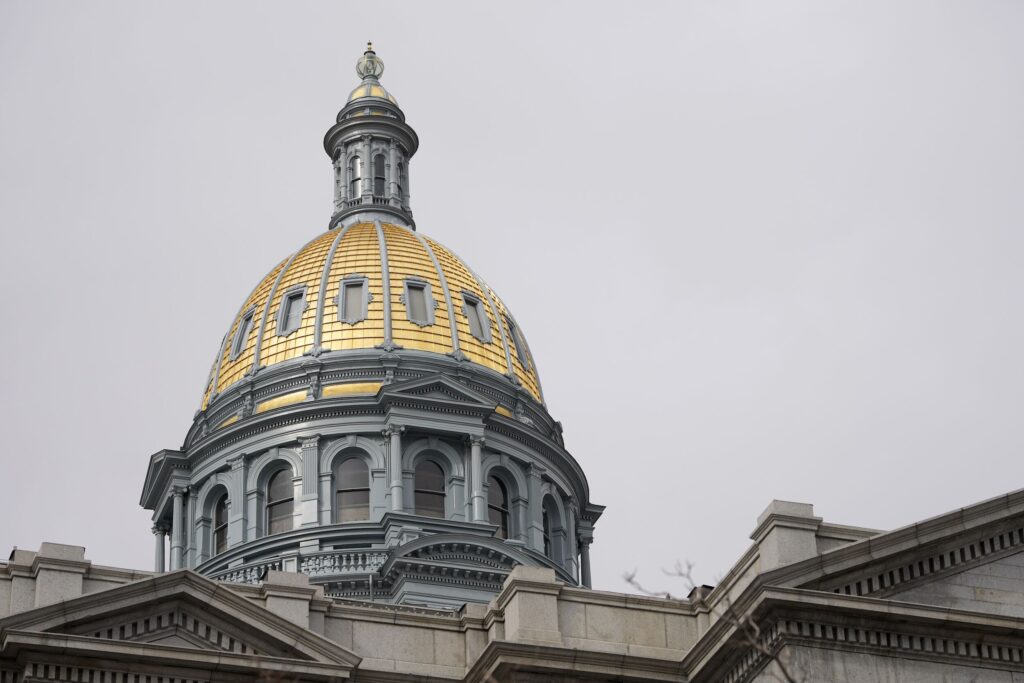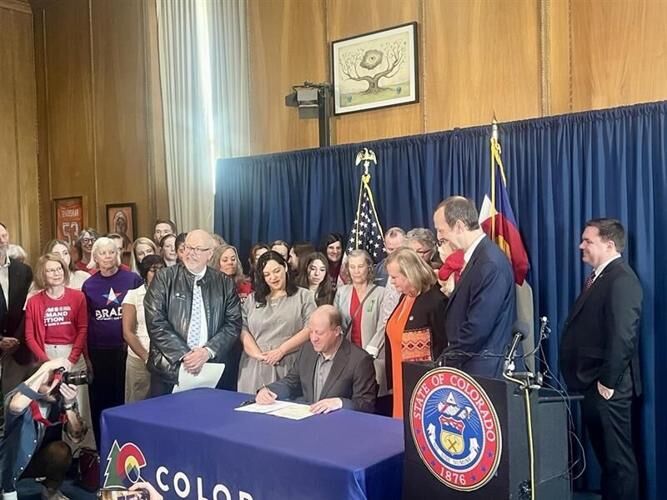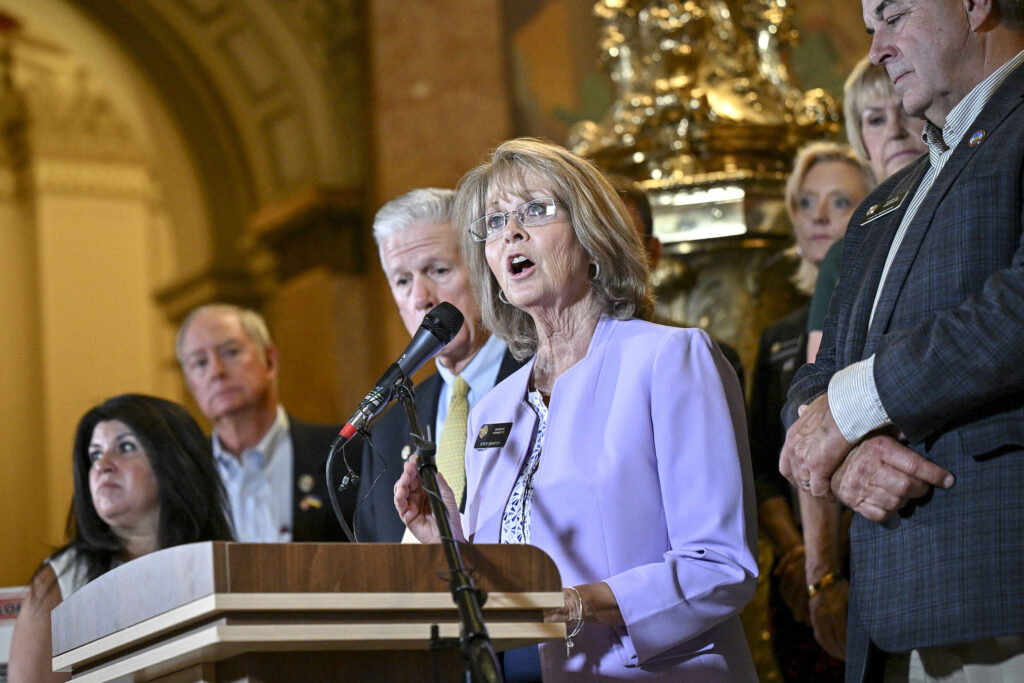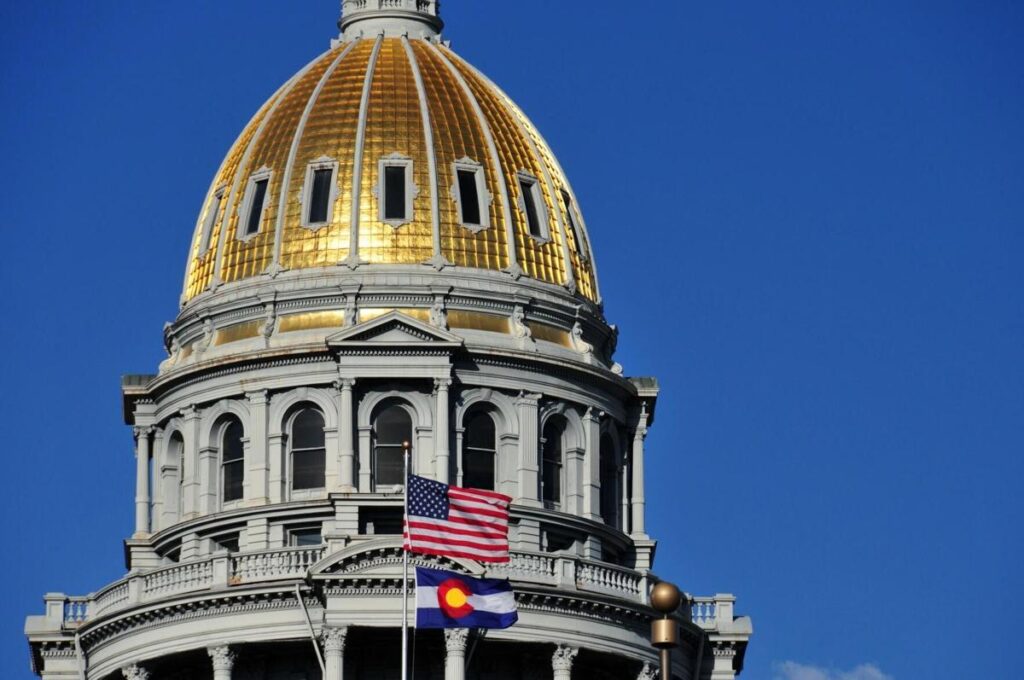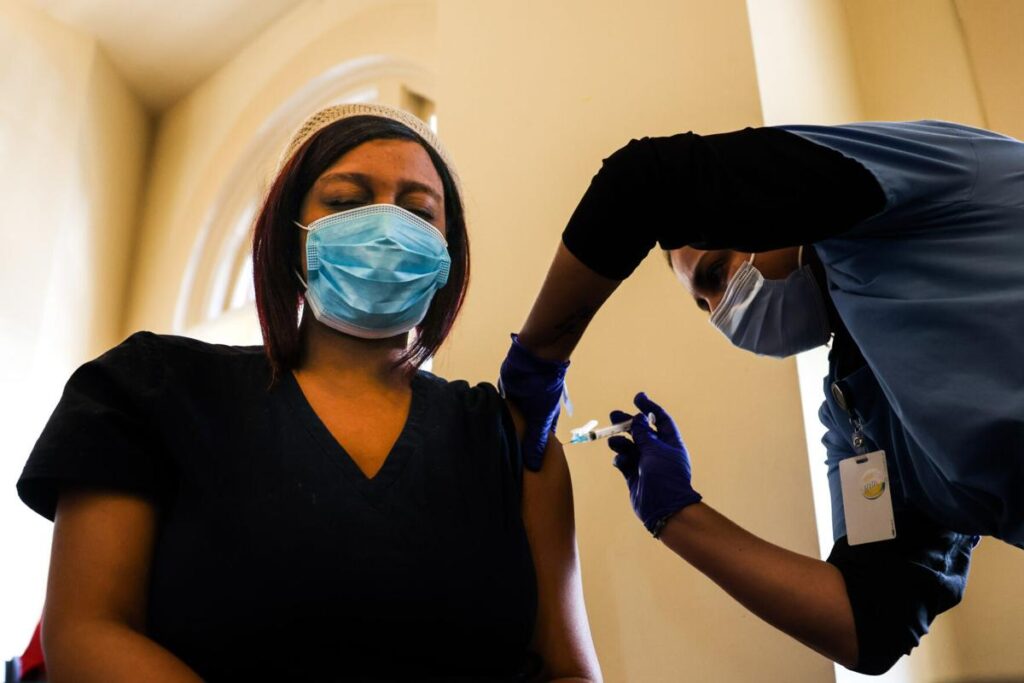Colorado First Amendment attorney weighs in on protests inside Capitol buildings
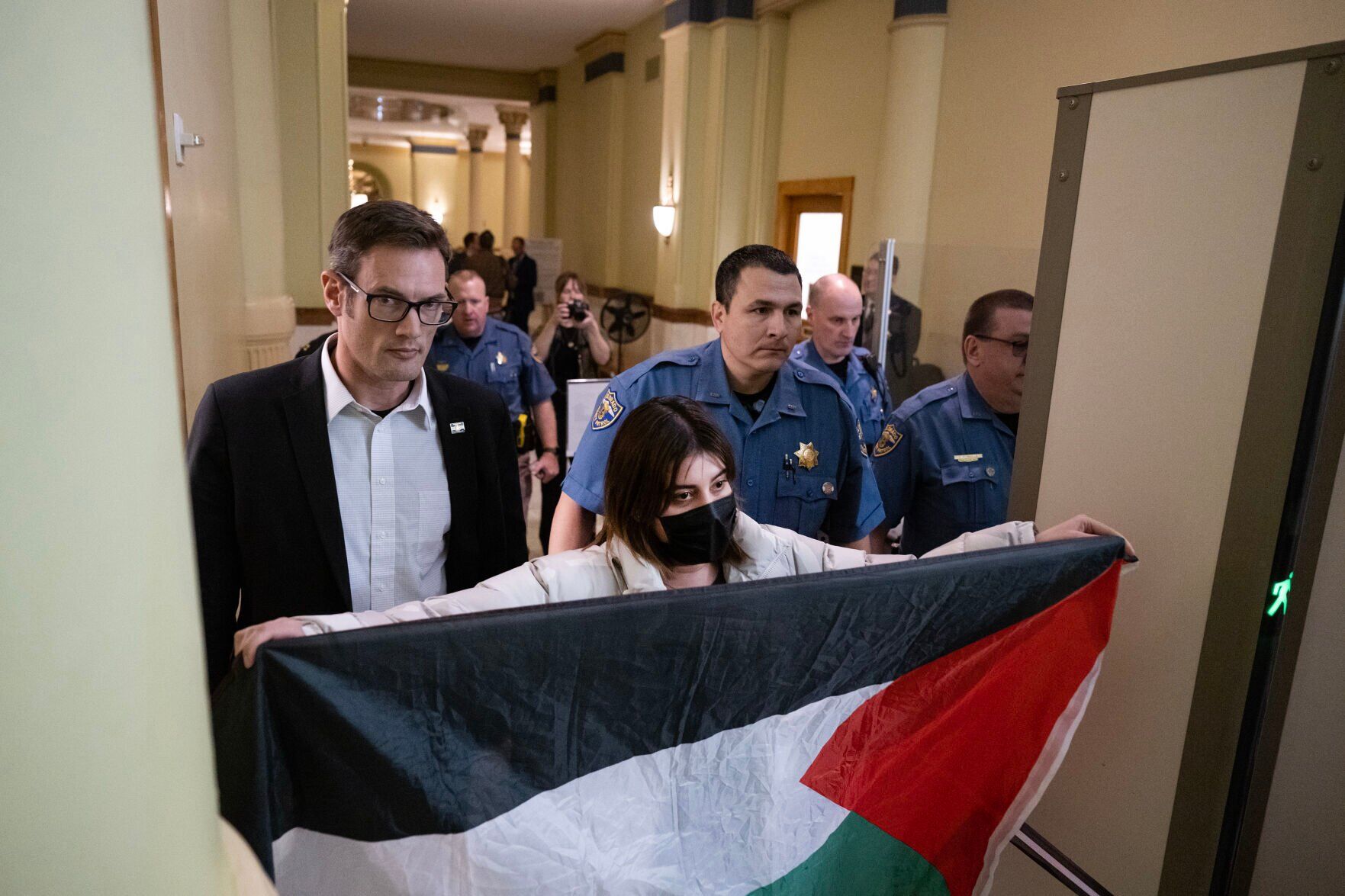
Political protests are a staple of American democracy, but what are its parameters in a legislative body, such as inside the chamber of the Colorado General Assembly, where several pro-Palestinian activists have shut down proceedings?
First Amendment attorney Mike Beylkin of Zansberg Law said protests inside the Capitol should be allowed – so long as they don’t interfere with the orderly conduct of legislative proceedings.
Beylkin also made a distinction between more benign forms of protests, such as the carrying of signs, and “large scale” protests that might be “beyond the rules of decorum.”
“Carrying signs or wearing slogans as a form of protest should be permitted so long as it does not actually interfere with the proper functioning of the government proceedings,” Beylkin told Colorado Politics.
Beylkin also made a distinction between protests inside a government building, where rules of decorum typically apply, and activities that occur outside in public spaces or on streets, where protesting is a “traditional public right.”
Protests have perennially disrupted proceedings at the state Capitol in the last few months. A pro-Palestinian protest temporarily halted the opening day ceremonies in the state House on Jan. 10. Pro-Palestinian activists also temporarily shut down proceedings during a special session in November, when a Democratic legislator joined them in the gallery, where the activists shouted down to the lawmakers on the floor.
The presiding officers of each chamber – House and Senate – hold the responsibility of maintaining decorum and they also have the power to clear disorderly conduct by, for example, deploying sergeants-at-arms.
Beylkin, the First Amendment lawyer, said the size of a protest also matters.
If the protest is intended to be “large scale,” Beylkin said they may be beyond decorum rules and therefore prohibited inside a government building. Beylkin said for protests outside, the government may only impose “reasonable, content-neutral ‘time, manner and place’ restrictions.”
Under Senate rules, the Senate President has the ultimate authority to preserve order in the chamber. The rule states that “in case of any disturbance or disorderly conduct” in the lobby or galleries, the president has the right to call the sergeants-at-arms to restore order.
Similar rules apply in the House.
If the sergeants need assistance, they may call in the Colorado State Patrol.
Beylkin also said that protesters who violate the statutes of general application by “engaging in civil disobedience, like disruptive protests or the destruction of property, should reasonably expect to face the sanctions the law may impose for their doing so.”
“The First Amendment has limits, like all other constitutional rights,” Beylkin said “No one should believe that they have a legal right to interfere with the orderly conduct of government proceedings and to do so without impunity.”
Protests and demonstrations have become more common at the state Capitol over the last year. Some have been peaceful; others have disrupted proceedings.
After shootings that killed or injured students and administrators last year, students from East High School marched to the Capitol to demand more gun control. Dozens staged a “die-in” in front of the office of Gov. Jared Polis. The governor spoke briefly to the students as did lawmakers from the House and Senate and from both sides of the aisle.
In April, young people were removed from the House gallery. A video from the Colorado Channel of the day’s proceedings showed what happened prior to that incident, in which the young people, believed to be school students, started shouting and disrupting the House proceedings.
Last November, during a special session aimed at finding a solution to soaring property taxes, pro-Palestinian protesters interrupted the House proceedings.
On Jan. 10, as the Colorado legislature called the 2024 session into order, the House was again disrupted by pro-Palestinian protesters. The protest caused the House to take a recess, while the protesters were escorted out of the building.
In another incident, Jeff Hunt of Colorado Christian University’s Centennial Institute said he was “blocked” from the Senate for wearing a “Pro-Life U” sweatshirt in March last year.
“I was blocked by the Colorado Senate from wearing my Pro-Life U sweatshirt in the Senate gallery, even though it’s a registered name for Colorado Christian University because it expresses a political sentiment and may result in conflict,” Hunt wrote on X.
In an email to Colorado Politics, Secretary of the Senate Cindi Markwell said Hunt entered the Senate gallery on a day when lawmakers where slated to talk about three bills that dealt with pro-life or abortion issues.
As a general rule, no apparel or buttons expressing implied or explicit political statements are permitted if they related specifically to a measure on the calendar, Markwell said.
“The purpose of this policy is to avoid conflict between opposing sides on any particular issue,” Markwell said. “Mr. Hunt was not removed from the gallery. After a Sergeant-at-Arms informed him of the protocol, he left the gallery, but would have been permitted in the remaining areas of the Capitol.”
Below is Michael Beylkin’s full answers to questions from Colorado Politics:
Colorado Politics: What protections does the First Amendment give to protestors?
Beylkin: The right to “protest” or to engage in other expressive conduct is protect by the First Amendment’s speech, assembly, and petitioning clauses.
CP: Does that differ at all when they’re inside a government building such as the capitol?
Beylkin: Such rights may be equally applicable inside a government building, like the statehouse, if there are areas within the building that are routinely opened for the public to attend/view. If there is a section of the building open to the public, rules of decorum will likely apply, so carrying signs or wearing slogans as a form of protest should be permitted so long as it does not actually interfere with the proper functioning of the government proceedings. But if the protest is intended to be a “large scale” protest, it may be beyond the rules of decorum, and the government may forbid such activities inside the building (just like disrupting a courtroom/trial). But, outside the building (beyond the exits/entrances) in public spaces or on public streets, those types of areas are considered public property/traditional public forums, and protesting in such public spaces is a traditional public right. The government may impose only reasonable, content-neutral “time, manner and place” restrictions for large scale protests in such spaces.
CP: Where is the line drawn with regards to proper and improper protesting behavior?
Beylkin: See above. The government may impose reasonable, and content-neutral, on speech and expressive conduct to maintain the decorum and proper functioning of government proceedings.
CP: Is there an expectation that people in the gallery will not disrupt proceedings or do lawmakers expect and accept that protests are part of the policymaking process?
Beylkin: Both chambers of the General Assembly require members of the public observing floor proceedings (and committee hearings) to not engage in conduct or speech that disrupts those proceedings.
CP: If so, what about the idea that lawmakers should be free from any form of intimidation during policy?
Beylkin: (See my prior response) Obviously, if the speech is just displayed on signs or visible slogans in the galley, it is hard to imagine that would constitute “intimidation.”
CP: How should lawmakers handle protests and disruptions?
Beylkin: I think that may be a better question for the specific agencies themselves as I suspect they have policies and procedures for dealing with disruptions. I believe that the Sergeant-at-Arms and other security/law enforcement personnel deployed in the statehouse are authorized to warn anyone disrupting the proceedings to immediately cease doing so or face removal and potential prosecution. But I’m not actually well-versed in the governing rules of both chambers and of criminal statutes for disrupting official government proceedings.
CP: If a protestor refuses to leave and has to be carried out of the building physically, should they be charged?
Beylkin: Those who violate statutes of general application by engaging in civil disobedience, like disruptive protests or the destruction of property, should reasonably expect to face the sanctions the law may impose for their doing so. Henry David Thoreau, Martin Luther King Jr., numerous anti-draft and anti-war protestors, and many others who have engaged in civil disobedience, were arrested and many spent time in jail for doing so. The First Amendment has limits, like all other constitutional rights. No one should believe that they have a legal right to interfere with the orderly conduct of government proceedings and to do so with impunity (as the January 6, 2021 Capitol riot demonstrates).
CP: What are your recommendations for allowing protests in a policymaking chamber?
Beylkin: In my view (only) signs, placards, and other such non-disruptive communications should be permitted inside the two chambers. But any speech or conduct that interferes with the orderly conduct of legislative proceedings, irrespective of the content of the message being conveyed, is subject to legitimate government regulation.
Below is Cindi Markwell’s full answers back in April to questions from Colorado Politics about the incident involving Jeff Hunt:
Colorado Politics: What was the rationale for removing him from the Senate gallery? Was Mr. Hunt removed from just the gallery or the building?
Markwell: It is my understanding that Mr. Hunt entered the Senate gallery on Tuesday, March 21, 2023, prior to the legislative session wearing a Pro-Life U sweatshirt. On the Senate Calendar that day were three bills (SB23-190, SB23-188, and SB23-189). These bills drew both pro-life and abortion rights constituents. In accordance with custom and practice and as stated on the signage posted on each side of the Senate gallery, no apparel can be worn expressing political statements. The purpose of this policy is to avoid conflict between opposing sides on any particular issue. Mr. Hunt was not removed from the gallery. After a sergeant-at-arms informed him of the protocol, he left the gallery, but would have been permitted in the remaining areas of the Capitol.
CP: Who made the decision to remove him?
Markwell: The Sergeant-at-Arms assigned to the gallery informed Mr. Hunt of the protocol, and he left. He was not removed.
CP: Can you tell me what the rules are on political messaging on the part of public members? What is allowed and what is not allowed? And who makes the decision as to who must stay or leave?
Markwell: No apparel or buttons expressing implied or explicit political statements are permitted. In accordance with custom and practice, if a statement relates to a measure on the calendar, the Sergeant-at-Arms would instruct the person to cover up the statement or leave the gallery.
CP: Also, how do you decide when a political message has crossed the line and therefore the person who wears the message must be asked to leave?
Markwell: If the Sergeant-at-Arms determines that the statement relates to a measure on the calendar for the day, the Sergeant would ask the person to cover it up or leave the gallery.
CP: Also, some of the protesters who were inside the Capitol in the days before and after Mr. Hunt was expelled also wore a shirt that had an overt political message: “Angels Against Gun Violence.”
Markwell: On the days that the East students were in the Capitol, there were no gun related measures on the Senate calendar.
CP: As far as I can tell, they were not asked to remove the shirt or to leave. Why is that? Insofar as the Senate’s rules, how is this political messaging by the anti-gun violence protesters different than Mr. Hunt’s t-shirt?
Markwell: Because no gun related measures were on the Senate calendar on those days.





